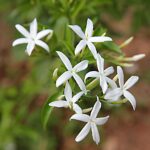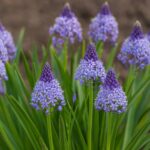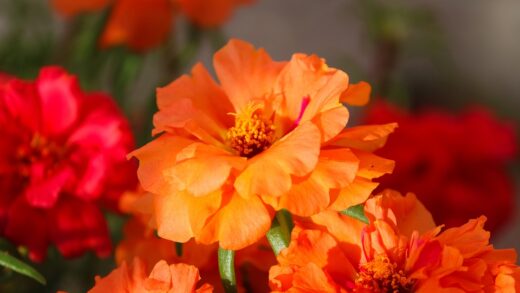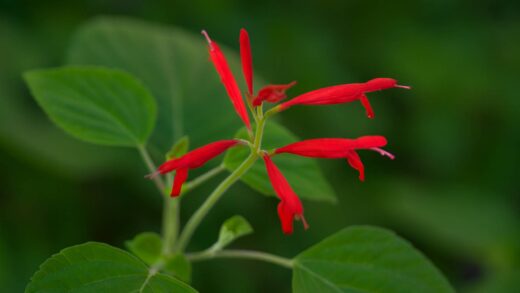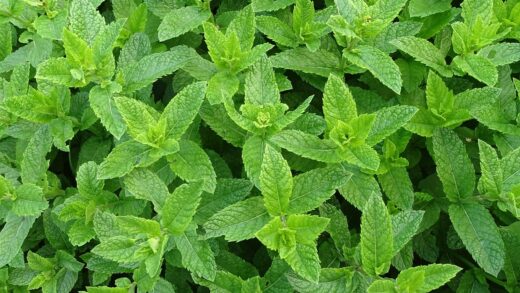The Manchu rose, or by its scientific name, Rosa xanthina, is a truly special and eye-catching shrub that produces its magical yellow flowers in the spring. However, to ensure it dazzles in its best form year after year and blooms profusely, professional pruning and care are essential. Many garden enthusiasts are uncertain about the correct technique, even though an intervention performed at the right time and in the right way can work wonders. This article provides a detailed guide to the intricacies of pruning the Manchu rose, so it can be a healthy and blooming ornament in your garden too. Proper pruning practice not only stimulates flowering but also improves the overall health of the plant, preventing diseases and ensuring a long life.
Fundamentals and timing of pruning the Manchu rose
The most important rule for pruning the Manchu rose is proper timing, which is fundamentally different from what is customary for modern, repeat-blooming hybrid teas. Since this species produces its flowers on old wood, meaning the previous year’s shoots, the most fatal mistake would be to prune it in the spring before flowering, as this would remove all the flower buds. The correct time is after flowering, usually in early summer, in June or July, when the last petals have fallen. At this point, the plant still has plenty of time to develop new shoots that will burst into bloom the following spring. This basic principle ensures you won’t miss out on the next year’s yellow floral splendor.
The primary goal of pruning in this case is not to encourage reblooming, but to maintain the plant’s health and shape its form. Pruning removes dead, diseased, or damaged branches that only burden the plant and provide an entry point for pathogens. Additionally, by thinning out the overly dense branch structure, we improve the foliage’s air circulation, which is crucial for preventing fungal diseases such as powdery mildew or black spot. Correctly executed pruning results in an airy yet rich branch system, which contributes to the plant’s vitality. The aim is to maintain a natural, fountain-like shape.
Before you start the work, make sure you have suitable, sharp, and clean tools. A good quality, sharp pair of secateurs is essential for thinner branches, while loppers or even a fine-toothed saw may be needed for thicker, woody parts. The cleanliness of the tools is extremely important to prevent the spread of diseases. It is advisable to wipe the blades with alcohol or another disinfectant before and after use, as well as after removing diseased parts. A sharp cutting surface makes a clean wound that heals faster and is less likely to become infected.
During pruning, always pay attention to the angle and location of the cut. Make the cut about 5-6 millimeters above a healthy, outward-facing bud, at a slight 45-degree angle. The direction of the cut should slope away from the bud, so that water and moisture can run off the wound instead of pooling on the bud, which could lead to rot. Cutting above an outward-facing bud ensures that the new shoot will grow outwards from the center of the bush, promoting the development of an airy, open form. Careful and precise cuts serve the plant’s rapid regeneration and healthy development.
More articles on this topic
Techniques of formative and maintenance pruning
For a young, newly planted Manchu rose, pruning should be minimal for the first two to three years. This period is called formative pruning, the goal of which is not to reduce size but to encourage the development of a strong, healthy framework. In this phase, primarily remove only damaged, diseased, or weak shoots lying on the ground. Allow the plant to develop its natural, arching shape and gain strength. Excessive early pruning can weaken the young plant and set back its development, so be patient and perform only the most necessary corrections.
For established specimens that have been in the garden for several years, annual maintenance pruning is the key to long-lasting beauty. Always begin this work with a thorough inspection of the entire bush. The first and most important step is to remove all dead, dried-out, black, or brown branches (so-called “dead wood”). Cut these parts back to healthy, green wood or even to the base. Next, look for branches showing signs of disease (e.g., spotted or deformed) or those that are mechanically damaged (broken, split), and remove them in the same manner as described above.
Once you have cleared the bush of dead and diseased parts, the next task is to thin out the branches that cause congestion. Look for shoots that cross over or rub against each other. Such branches cause injuries to one another, opening a pathway for infections, and they also inhibit the flow of air and light into the interior of the bush. Of the two crossing branches, always cut out the weaker one, the one in a poorer position, or the one growing towards the center of the bush, right from its base. The goal is a structure where every branch has enough space to grow.
The final phase of maintenance pruning is refining the shape and keeping the size in check. Take a few steps back and examine the overall silhouette of the rose. The natural beauty of the Manchu rose lies in its gracefully arching, fountain-like form, and pruning should support this character. Cut back shoots that stick out too much or disrupt this harmony to a lower, outward-facing branch or bud. Avoid drastic cutting back and shearing the bush into a “ball” shape, as this completely spoils its natural habit and results in a mass of weak, dense shoots.
More articles on this topic
Rejuvenation pruning and special considerations
Over the years, the Manchu rose bush can become old; its oldest branches thicken, become barky, and produce fewer and fewer flowers. When you notice that the blooming enthusiasm is declining and the center of the bush is becoming bare, it is time to perform a rejuvenation pruning. The purpose of this intervention is to encourage the plant to produce new, vigorous basal shoots that will take over the role of the aged parts in the coming years. This process restores the bush’s vitality and guarantees abundant flowering in the future. Rejuvenation is, in fact, the natural renewal of the rose’s life cycle.
It is not advisable to carry out rejuvenation pruning drastically in a single year, as it would be too stressful for the plant. The best method is a gradual approach, spread over a three-year cycle. During the post-flowering pruning each year, select one-third of the oldest, thickest, most woody branches and cut them out right down to ground level or to the lowest junction of the main stem. This creates space for new shoots to emerge from the base or the bottom of the main canes. Over three years, the entire branch system of the bush is replaced without subjecting the plant to excessive stress.
The selection of branches for removal is crucial. The oldest canes can usually be identified by their darker, greyish-brown color, their thickness, and their cracked, barky surface. They often develop only weak, thin side shoots, and their flower yield is also lower. In contrast, younger, one- or two-year-old shoots are lighter in color, have a smoother surface, and are much more vigorous. During rejuvenation pruning, these young, productive shoots must be left, as they ensure the next year’s flowers and the renewal of the bush.
After major pruning interventions such as rejuvenation, post-pruning care is particularly important. Following the pruning, water the rose bush thoroughly and, to support its recovery, spread a layer of mature compost or good-quality organic manure around its base. This provides the plant with the necessary nutrients essential for developing new, strong shoots. Adequate nutrient replenishment and regular watering during drier periods ensure that the rose quickly recovers from the stress of pruning and performs at its best again the following season.
Common mistakes and post-flowering tasks
The most common and most fatal mistake in pruning the Manchu rose is incorrect timing. Many people, out of habit, prune it along with other roses in late winter or early spring, which for this species results in a complete lack of flowers. It is important to emphasize again and again that since the flowers develop on the previous year’s canes, spring pruning removes precisely the flowering parts. So, remember the most important rule: the Manchu rose should only be pruned after it has flowered, in early summer. This knowledge is the key to year after year of floral splendor.
Another serious mistake is excessively drastic cutting back or shearing with a hedge trimmer. The natural habit of the Manchu rose is a loose, fountain-like arching shrub, and this beauty is ruined if we try to force it into a rigid, geometric shape (like a sphere or a rectangle). Such an intervention creates a dense, broom-like thicket of shoots at the top of the bush, which inhibits air circulation, while the lower parts become bare. Proper pruning always aims to enhance the plant’s natural form, not to suppress it, preserving its airy, elegant appearance.
Attention must also be paid to the possible appearance of suckers, especially if the plant is a grafted specimen. Although the Manchu rose is often grown on its own roots, grafted plants do exist. Suckers emerge from below the graft union, from the rootstock or the root system itself, and usually have different foliage and a more vigorous, thornier growth habit. It is not enough to cut these shoots at ground level, as they will sprout again from there. The most effective method is to carefully dig down to their point of origin and tear or cut them off from the root at the base.
In the period after flowering and pruning, aftercare is not limited to providing nutrients. Although the Manchu rose is relatively resilient, it is worth observing the plant regularly for any signs of pests or diseases. Fresh pruning cuts can attract pests, and the summer heat can be favorable for certain pathogens. As for the spent flowers, they can be cut off (deadheaded) so the plant does not expend energy on producing fruit. However, the small, blackish hips of the Manchu rose can also be ornamental, so if you enjoy their appearance, feel free to leave them on the bush.








